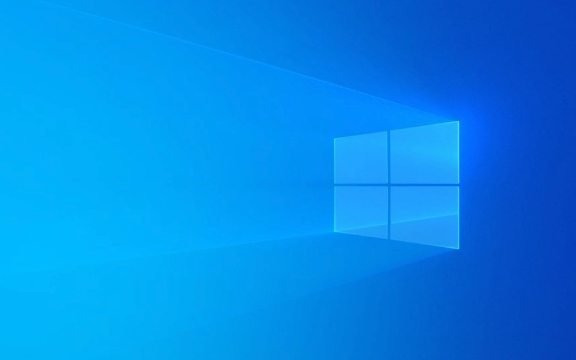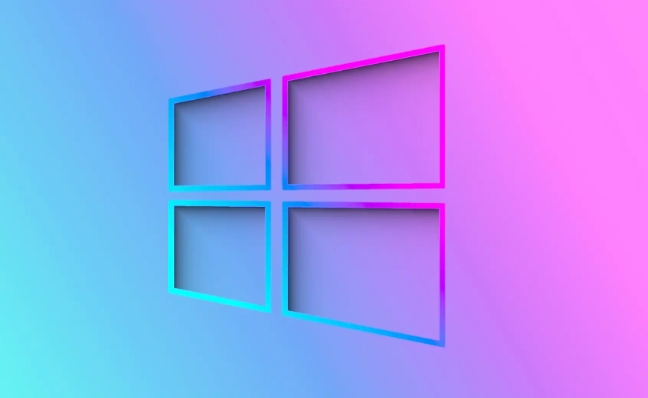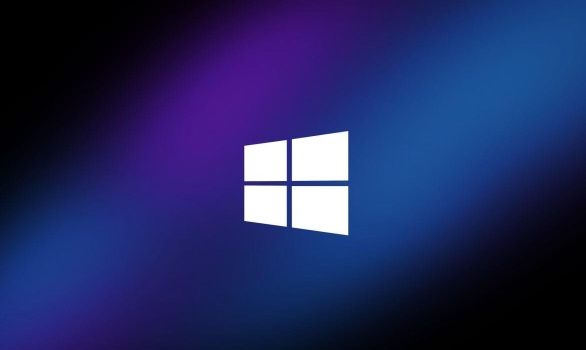Identify your primary use case—basic tasks, office work, content creation, gaming, or programming—as it determines the necessary specs. 2. Consider portability and battery life by choosing ultrabooks under 3.5 lbs with 8 hours of battery for mobility, or larger models for performance. 3. Prioritize display quality with at least 1080p resolution, IPS panel, and matte finish for comfort, along with a comfortable keyboard and responsive trackpad. 4. Balance performance and budget by opting for 16GB RAM and 512GB SSD as ideal for most users, with budget ranges of $400–600 for casual use, $700–1,000 for best value, and $1,000 for high-performance needs, while selecting an OS based on software requirements and checking reviews, warranty, and support to ensure reliability and fit for your lifestyle.

Choosing the right laptop can feel overwhelming with so many options on the market. The key is to focus on your actual needs—not just the specs or the brand name. Here’s how to make a smart decision without overspending or under-delivering.

1. Identify Your Primary Use Case
Before looking at models, ask yourself: What will I mainly use this laptop for? Your answer determines everything.
- Basic tasks (web browsing, email, streaming): You don’t need high-end hardware. A budget laptop with an Intel Core i3, AMD Ryzen 3, or even a Celeron processor, 8GB RAM, and 256GB SSD is more than enough.
- Office work and multitasking: Aim for at least an Intel Core i5 or AMD Ryzen 5, 16GB RAM if you keep many tabs and apps open, and a solid-state drive (SSD) for faster performance.
- Content creation (photo/video editing, graphic design): Look for a powerful CPU (Intel Core i7/i9 or AMD Ryzen 7/9), dedicated graphics (like NVIDIA RTX or AMD Radeon), 16GB RAM, and a high-resolution display with good color accuracy.
- Gaming: Prioritize a strong GPU (NVIDIA RTX 30/40 series), fast processor, 16GB RAM, high refresh rate screen (120Hz or higher), and good cooling. Portability may be sacrificed here.
- Programming and development: A fast CPU, 16GB RAM, and a comfortable keyboard are essential. Integrated graphics may suffice unless you're doing machine learning or game dev.
2. Consider Portability and Battery Life
Think about where and how often you’ll carry your laptop.

- Ultrabooks (13–14 inches): Great for students and professionals who travel. Lightweight, slim, and often have 8 hours of battery life.
- 15–16 inch laptops: Offer better performance and screen real estate but are heavier and usually have shorter battery life.
- 17 inch models: Best for gaming or desktop replacement, but not ideal for commuting.
If you’re on the go, prioritize:
- Weight under 3.5 lbs (1.6 kg)
- Battery life of 8 hours
- Fast charging capability
3. Don’t Overlook the Display and Keyboard
These affect daily comfort more than you’d think.

- Screen size and resolution: 1080p (Full HD) is standard. For creative work, consider 2K or 4K. Larger screens help with multitasking but reduce portability.
- Panel type: IPS panels offer better color and viewing angles than TN—important for photo/video work.
- Matte vs. glossy: Matte reduces glare in bright environments; glossy gives more vibrant colors.
- Keyboard and trackpad: Test if possible. A comfortable, well-spaced keyboard with good key travel makes typing easier. A large, responsive trackpad is a plus, especially if you don’t use a mouse.
4. Balance Performance, Storage, and Budget
You don’t need the fastest specs for every task.
- RAM: 8GB is okay for basic use, but 16GB is becoming the sweet spot for future-proofing.
- Storage: Always go for an SSD—HDDs are slow and outdated. 256GB is minimal; 512GB or 1TB is better if you store lots of files or media.
- Upgradability: Some laptops let you upgrade RAM or storage later. Check if that matters to you—many ultrabooks now have soldered components.
Set a realistic budget:
- $400–600: Good for students and casual users.
- $700–1,000: Best value range—solid performance, build quality, and features.
- $1,000 : For professionals, creators, and gamers who need top-tier specs.
Final Tips
-
Operating System: Choose based on preference and software needs:
- Windows: Most versatile, broad software support.
- macOS: Great for creatives, seamless Apple ecosystem.
- ChromeOS: Lightweight, secure, ideal for web-based tasks (Chromebooks).
- Check reviews: Look at real-world performance, not just spec sheets. Sites like Notebookcheck, PCMag, and YouTube reviewers offer in-depth testing.
- Warranty and support: Consider brands with good customer service (e.g., Dell, Lenovo, Apple) especially if you rely on it daily.
Basically, match the laptop to your lifestyle and workload—not to marketing hype. A $1,500 gaming beast is overkill for writing essays, just like a $300 Chromebook won’t run video editing software. Know your needs, prioritize key features, and you’ll find the right fit.
The above is the detailed content of How to Choose the Right Laptop for Your Needs. For more information, please follow other related articles on the PHP Chinese website!

Hot AI Tools

Undress AI Tool
Undress images for free

Undresser.AI Undress
AI-powered app for creating realistic nude photos

AI Clothes Remover
Online AI tool for removing clothes from photos.

Clothoff.io
AI clothes remover

Video Face Swap
Swap faces in any video effortlessly with our completely free AI face swap tool!

Hot Article

Hot Tools

Notepad++7.3.1
Easy-to-use and free code editor

SublimeText3 Chinese version
Chinese version, very easy to use

Zend Studio 13.0.1
Powerful PHP integrated development environment

Dreamweaver CS6
Visual web development tools

SublimeText3 Mac version
God-level code editing software (SublimeText3)
 Google Translate Picture | Translate Text in Images - MiniTool
Jul 12, 2025 am 12:57 AM
Google Translate Picture | Translate Text in Images - MiniTool
Jul 12, 2025 am 12:57 AM
This Google translate picture guide shows you how to translate text from an image. If you are looking for more computer tips and solutions, you can visit php.cn Software official website where you can also find some useful computer tools like php.cn
 How to Install Device Drivers Manually on Windows 11/10? - MiniTool
Jul 06, 2025 am 12:15 AM
How to Install Device Drivers Manually on Windows 11/10? - MiniTool
Jul 06, 2025 am 12:15 AM
If your Windows 11/10 computer doesn’t automatically the latest versions of device drivers, you will need to manually install them. In this post, php.cn Software will show you 3 different methods to manually install drivers on your device.
 How to Amplify/Boost/Increase Microphone Volume Windows 11? - MiniTool
Jul 06, 2025 am 12:27 AM
How to Amplify/Boost/Increase Microphone Volume Windows 11? - MiniTool
Jul 06, 2025 am 12:27 AM
This post delivered by php.cn official web page introduces three methods to improve microphone volume and boost its performance, in Control Panel, via Settings, and by Device Manager. Read the below content to view details.
 what is an operating system
Jul 11, 2025 am 03:16 AM
what is an operating system
Jul 11, 2025 am 03:16 AM
The operating system is the basic software for managing hardware resources, running programs, and providing user interaction interfaces. It coordinates the relationship between hardware and software and is responsible for memory allocation, device scheduling, file management and multitasking. Common systems include Windows (suitable for office and gaming), macOS (Apple devices, suitable for creative work), Linux (open source, suitable for developers), and Android/iOS (mobile device system). The choice of ordinary users depends on the usage scenario, such as software compatibility, security and customization requirements. How to view system information: Use winver command for Windows, click on the machine for macOS, use terminal commands for Linux, and find the phone in settings. The operating system is the underlying tool for daily use,
 How to Open and Run dxdiag.exe on Windows 10/11
Jul 06, 2025 am 12:23 AM
How to Open and Run dxdiag.exe on Windows 10/11
Jul 06, 2025 am 12:23 AM
This post includes answers for what is dxdiag, how to run dxdiag in Windows 10/11, DirectX Diagnostic Tool’s main functions, and how to update dxdiag.exe driver. php.cn Software also provides many other computer tips and solutions for users. You can
 Best Ways to Fix Windows 11/10 Control Panel Not Opening!
Jul 08, 2025 am 12:01 AM
Best Ways to Fix Windows 11/10 Control Panel Not Opening!
Jul 08, 2025 am 12:01 AM
Have you ever wanted to adjust computer settings to fix some issues but suffered from Control Panel not opening? There is nothing more frustrating than this app not turning on, stopping you from viewing and changing system settings. In this post, mul
 What Is Dell Digital Locker? How to Log in and Use It on Dell PC? - MiniTool
Jul 07, 2025 am 12:28 AM
What Is Dell Digital Locker? How to Log in and Use It on Dell PC? - MiniTool
Jul 07, 2025 am 12:28 AM
What is Dell Digital Locker? How to log into Dell Digital Locker? This post from php.cn provides answers. Besides, you can know how to use your Dell Digital Locker to find software products included with your Dell computer.
 How to Open Windows 11 Computer Management Console in 7 Ways? - MiniTool
Jul 09, 2025 am 12:18 AM
How to Open Windows 11 Computer Management Console in 7 Ways? - MiniTool
Jul 09, 2025 am 12:18 AM
This essay summarized by php.cn Software mainly teaches you how to open Windows 11 Computer Management with Windows Search, Quick Link menu, Run dialog, command prompt, PowerShell, File Explorer, Control Panel, as well as a desktop shortcut.






